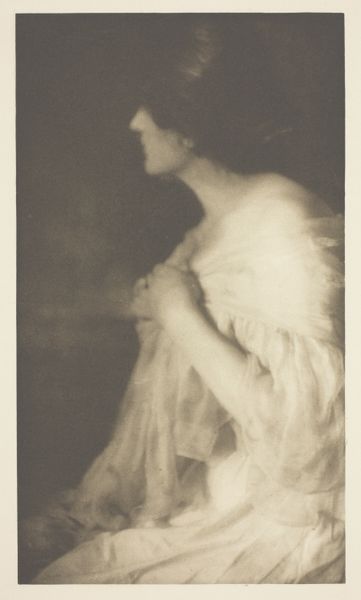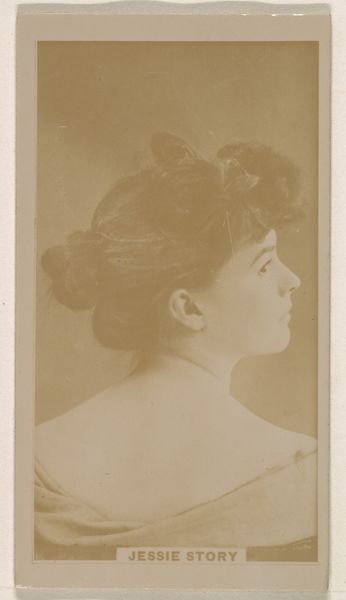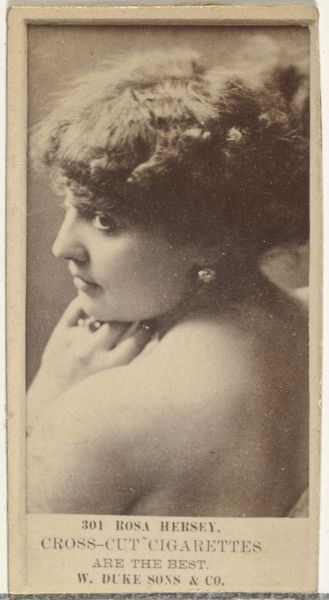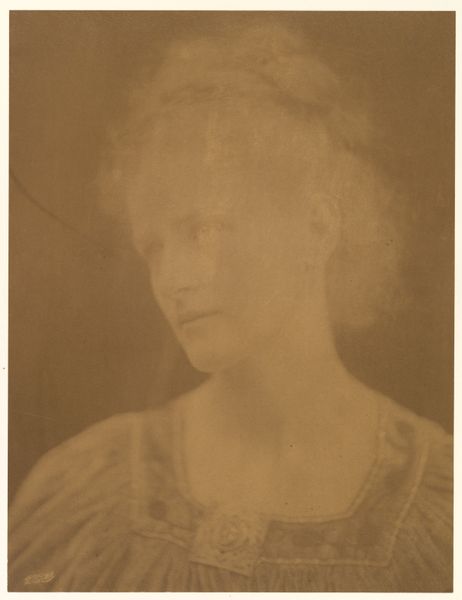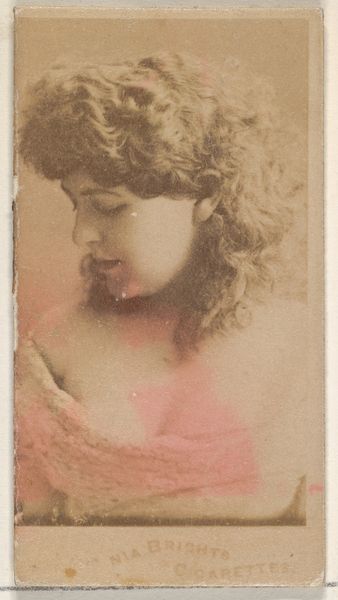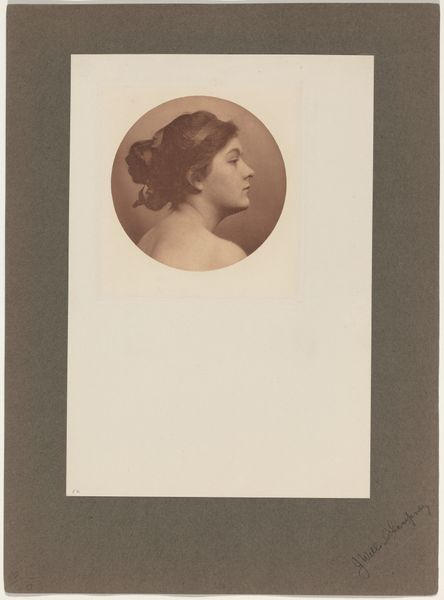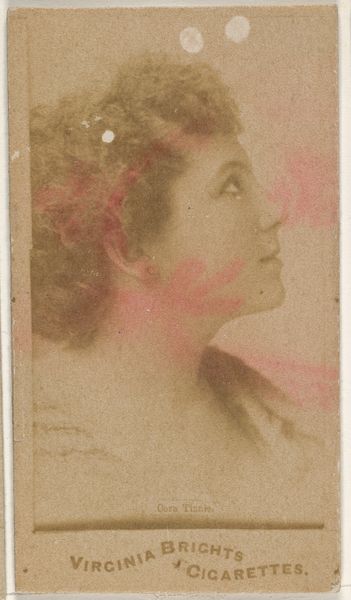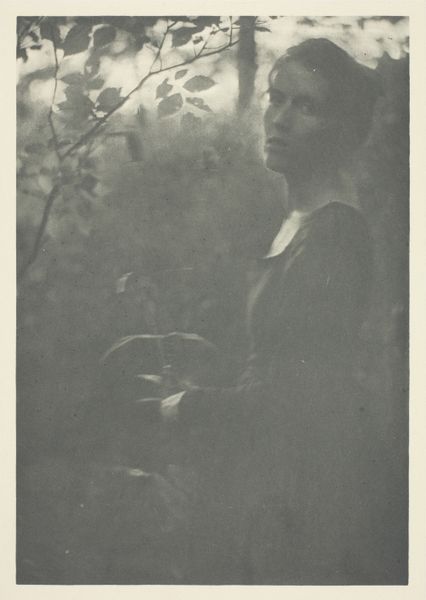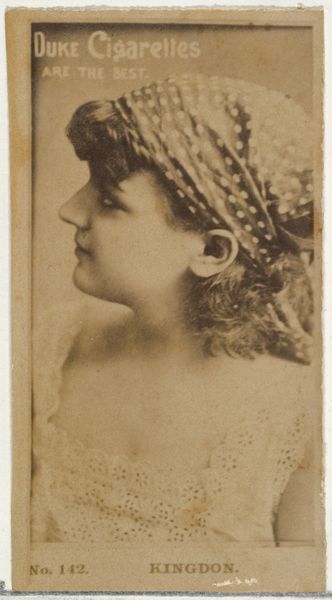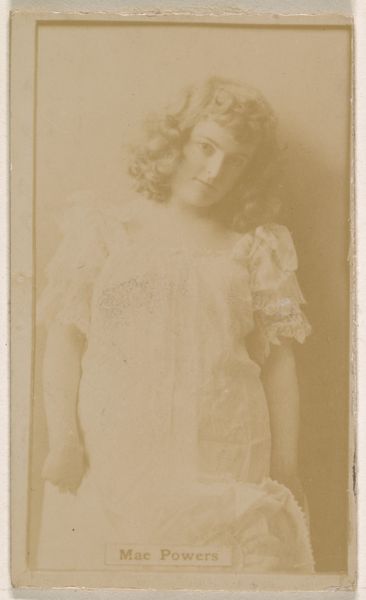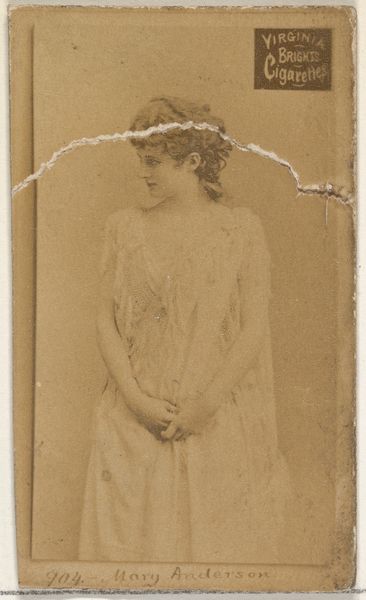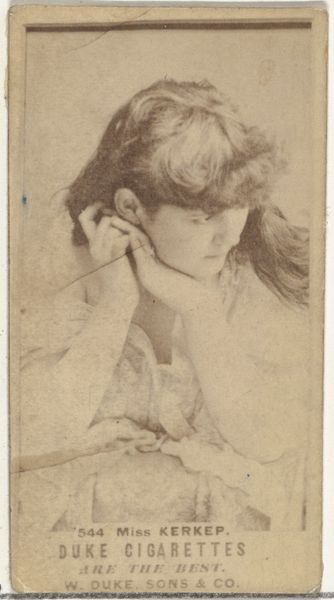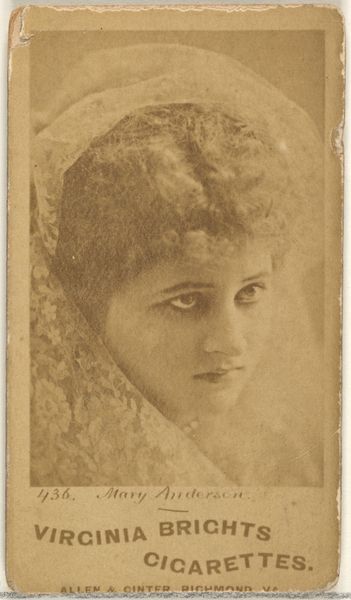![[The Averted Head - A Study in Flesh Tones] by Joseph T. Keiley](/_next/image?url=https%3A%2F%2Fd2w8kbdekdi1gv.cloudfront.net%2FeyJidWNrZXQiOiAiYXJ0ZXJhLWltYWdlcy1idWNrZXQiLCAia2V5IjogImFydHdvcmtzL2E0NjQ5MjYwLWQzNjctNGU4Yy1hMTIyLThlMTMwNWJiMzJiOS9hNDY0OTI2MC1kMzY3LTRlOGMtYTEyMi04ZTEzMDViYjMyYjlfZnVsbC5qcGciLCAiZWRpdHMiOiB7InJlc2l6ZSI6IHsid2lkdGgiOiAxOTIwLCAiaGVpZ2h0IjogMTkyMCwgImZpdCI6ICJpbnNpZGUifX19&w=3840&q=75)
Dimensions: 16.5 x 10.5 cm. (6 1/2 x 4 1/8 in.)
Copyright: Public Domain
Curator: We're looking at Joseph T. Keiley's photograph from 1899, titled "[The Averted Head - A Study in Flesh Tones]." Editor: It’s striking! The tonal range and the soft focus almost dissolve the figure. There is something fragile and introverted about the work that stays with you. Curator: Indeed. It epitomizes pictorialism, that late 19th and early 20th-century movement using photography as a means for artistic expression. Note how Keiley manipulates the medium, creating a dreamy, romantic aesthetic, a far cry from sharp, documentary photography. Editor: That is where my attention goes as well. The averted gaze speaks volumes. In art historical tradition, a turned head can mean anything from coyness to mourning or reverence. She turns away, creating a palpable sense of emotional distance, despite the intimacy inherent in a nude study. Curator: It certainly disrupts easy interpretations. The lack of sharp lines—the gentle gradation of light—enhances the abstract quality. The head and neck become almost sculptural forms. This emphasis on formal qualities, light and shadow, transforming flesh into shapes, takes precedence. Editor: And in rendering her thus, are we to conclude that the work strips away aspects of personality and renders her as merely a representation of the feminine form in some abstract way? What readings do you get from the romantic tradition itself present in the tonality? Is it a universal idea that the author is engaging or simply something intensely personal? Curator: One might read a romantic leaning through the tonal richness that infuses the print. Yet it also presents itself with such simplicity; with its concentration on line and shadow, this recalls the idealized human form celebrated since antiquity. Editor: I'm struck by how Keiley manages to convey both vulnerability and detachment through the image. It speaks volumes about the constructed nature of images themselves. Curator: Ultimately, this work invites viewers to consider photography as more than mere reproduction. Keiley prompts us to recognize its capacity for evocative expression through tone, form, and manipulation of light. Editor: I agree; the power of symbolism combined with technical skill really gives it that lasting quality.
Comments
No comments
Be the first to comment and join the conversation on the ultimate creative platform.
